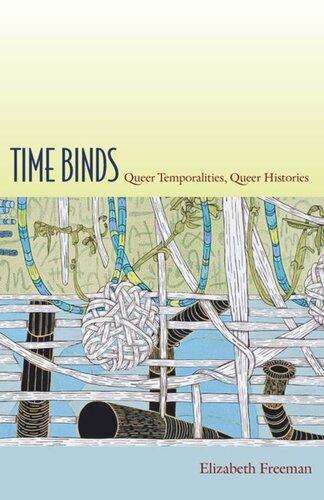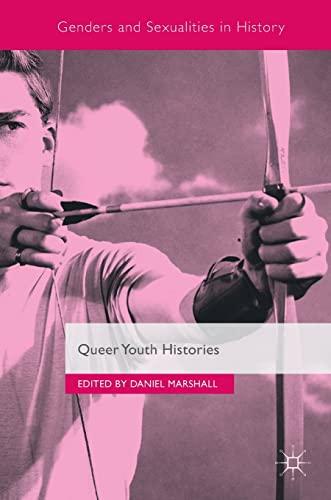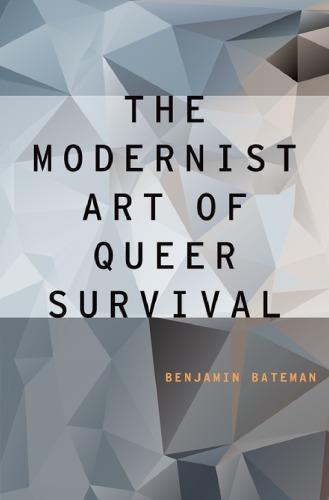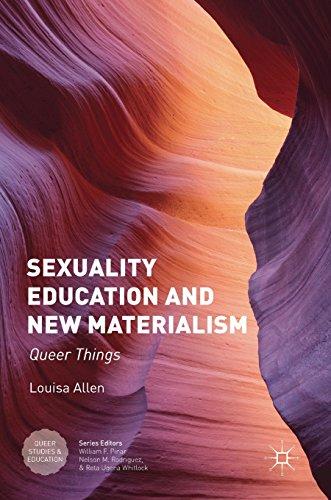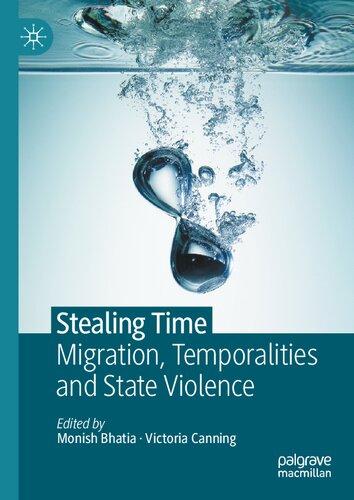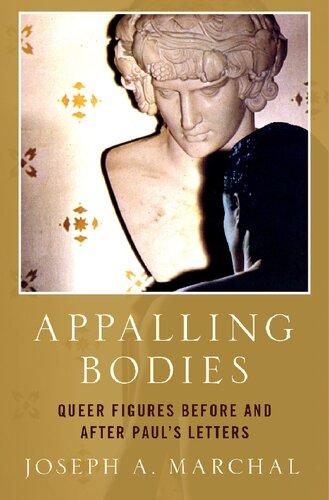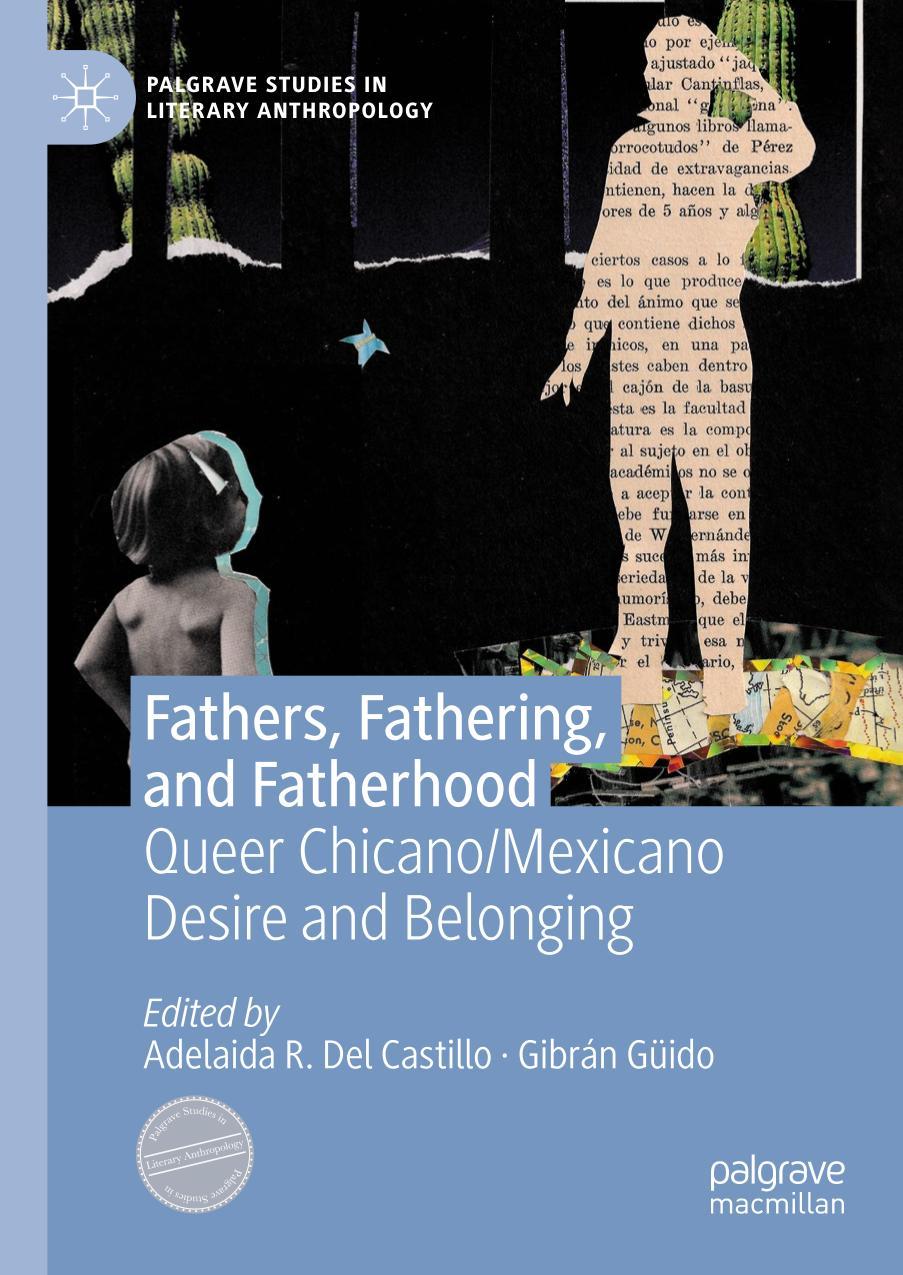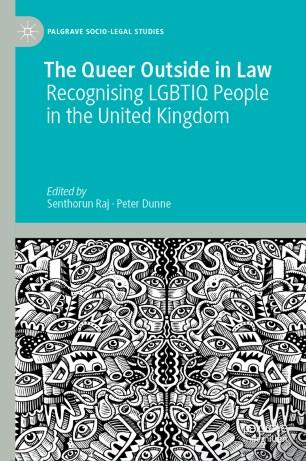TIME BINDS
Queer Temporalities,
Queer Histories
elizabeth freeman
Duke University Press
Durham and London 2010
∫ 2010 Duke University Press
All rights reserved
Printed in the United States of America on acid-free paper $ Designed by Amy Ruth Buchanan
Typeset in Carter & Cone Galliard by Keystone Typesetting, Inc.
Library of Congress Catalogingin-Publication Data appear on the last printed page of this book.
Duke University Press gratefully acknowledges the University of California, Davis, who supported the publication of this book.
For the Frog and the Fly
And for my mother, who needs more time
Prefaceix
Acknowledgmentsxxv
Introduction: Queer and Not Now1
1. Junk Inheritances, Bad Timing: Familial Arrhythmia in Three WorkingClass Dyke Narratives21
2. Deep Lez: Temporal Drag and the Specters of Feminism59
3. Time Binds, or, Erotohistoriography95
4. Turn the Beat Around: Sadomasochism, Temporality, History137
Coda171
Appendix: Distributors for Films and Videos175
Notes177
Bibliography193
Index209
preface
In 1915, the British poet Robert Graves wrote a poem, ‘‘It’s a Queer Time.’’ Popularly understood as a lighthearted, topical ballad about the trauma of trench warfare, the poem sets up a counterpoint between images of gory battle and of the hallucinatory utopias the second-person speaker encounters when he loses consciousness. ‘‘It’s hard to know if you’re alive or dead,’’ the poem opens, ‘‘When steel and fire go roaring thro’ your head.’’ It’s also hard to know if being ‘‘alive’’ consists of fighting the war or blacking out. Here is a sample stanza, the third of five:
You’re charging madly at them yelling ‘‘Fag!’’
When somehow something gives and your feet drag. You fall and strike your head; yet feel no pain And find . . . . . . . . you’re digging tunnels through the hay In the Big Barn, ’cause it’s a rainy day.
Oh, springy hay, and lovely beams to climb!
You’re back in the old sailor suit again.
It’s a queer time.∞
Here, the homophobia necessary to fuel masculine violence gives way to another version of the trench: tunnels in a haystack. The speaker finds himself back on the farm, where rain, ‘‘springy’’ hay, and wood suggest life. He also appears to be dressed as a gay icon.
Lest I be accused of reading ‘‘sailor suit’’ and even ‘‘queer’’ anachronistically, let me summarize the other stanzas. All but the first two-line closed couplet end with the refrain ‘‘It’s a queer time.’’ In the second stanza, the speaker is wounded (‘‘you’re clutching at your chest,’’ line 5) and astrotravels to the homosocial Treasure Island, which is some amalgam of Orientalized Eastern tropical romance (‘‘spice winds blow / To lovely groves of Mango, quince, and lime—,’’ lines 7–8) and dime-novel western (‘‘Breathe no good-bye, but ho! for the Red West!,’’ line 9). In the fourth stanza, when a bomb hits the speaker as he’s sleeping in a trench, he finds himself ‘‘struggling, gasping, struggling, then . . . hullo! / Elsie
This poem seemingly sets straight and queer temporalities, life and death, military nation and hallucination against one another: but it also suggests that the pleasures of queerness can be found in the interstices of national-political life, and that they are definitely worth living for. Its ‘‘queer time’’ is at once temporal (a phantasm in the first stanza, a blackout in the second, an apparitional encounter in the third, and the whole scene ‘‘fading’’ away in the fourth, as the speaker nears death) and historical (the ‘‘it’’ in ‘‘it’s a queer time’’ is clearly World War I, situated by the poem’s references to trenches and dugouts, the chemical explosive lyddite, and the ‘‘Boches,’’ French slang for ‘‘krauts’’). So not only is the time of fantasy queer here, so also is the time of world history and politics proper.
This isn’t exactly news to anyone who has read any gay and lesbian history; the First World War saw the rise of a nascently gay subculture in port cities where sailors and rough trade met one another, and in the urban areas that expanded to accommodate any number of migrations.≤ But more than telling a story of how gay and global histories intertwine, this poem narrates military history’s failure to fully organize time toward nationalist ends. The speaker is a soldier who refuses to die for the glory of his country but comes back for more and more of the pain that will give him access to a queer world of his own making. Queer time overtakes
x preface comes tripping gaily down the trench / Hanky to nose [. . .] Getting her pinafore all over grime’’ (lines 21–24). Given the campiness of Elsie’s attire and gestures, it’s hard not to read Elsie ‘‘gaily,’’ as a bit of a queen. But she is also an apparition—‘‘Funny! because she died ten years ago’’ (line 25)—so ‘‘queer time’’ appears haunted. And in the last stanza, the speaker remarks that the trouble with war is that ‘‘things happen much too quick’’ (line 27): whereas queer time elongates and twists chronology, war simply forecloses it. He tells us that ‘‘even good Christians don’t like passing straight / From Tipperary or their Hymn of Hate / To Alleluiah-chanting and the chime / Of golden harps . . . and . . . I’m not well today . . . / It’s a queer time’’ (lines 30–34). The line break suggests that the speaker himself might be ‘‘passing [for] straight,’’ but the next enjambed line rewrites the verb to condemn the direct route to Heaven. Here the speaker prefers to dwell in some other temporal regime than either the foreshortened time of the patriot or the eschatological scheme where death leads directly to salvation. He breezily dismisses his own mortal end, preferring to be merely ‘‘not well today,’’ and remains in ‘‘queer time.’’
both secular and millennial time. And within the lost moments of o≈cial history, queer time generates a discontinuous history of its own, which includes colonialist endeavors (the source material for the novel Treasure Island), the homosocial nationalism of boys’ culture (the cultural work to which Treasure Island was put), cowboy culture and manly Manifest Destiny in the ‘‘Red West’’ of the Americas, the aforementioned ports of homosexual call, drag culture, and even the Church itself, each of which fostered erotic contact between men. In other words, these dreams may be dreams of an escape from history, but they also give access to an alternative history. And they are more than reveries: they are moments of extreme bodily sensation. As the soldier’s presumably masculine, figuratively impenetrable body is ripped by ‘‘steel and fire’’ (line 2), struck in the head, su√ocated with lyddite, and shot with a German rifle, he enters queer time, which makes a queer history he can enter too.
Throughout this book, I try to think against the dominant arrangement of time and history that would ordinarily guide the understanding of this poem, in which historical narrative (here, the First World War) organizes various temporal schemae into consequential sequence (such that eventually, the speaker’s hallucinations will be readable as harbingers of his glorious sacrifice for this country).≥ Instead, I track the ways that nonsequential forms of time (in the poem, unconciousness, haunting, reverie, and the afterlife) can also fold subjects into structures of belonging and duration that may be invisible to the historicist eye. This poem prefigures my chapters in many ways. For instance, ‘‘It’s a Queer Time’’ juxtaposes the precise timings of military incursions, perhaps the nation’s most explicit form of synching up bodies and time, with ‘‘travers[ing] . . . dozing . . . struggling . . . stagger[ing]’’ movements that bring past and present together (lines 4, 19, 21, 29). In chapter 1, I argue that even nonnationalist cultural belonging is a matter of a√ects that inhere, in many ways, in shared timings, and I stake my claim for a counterpolitics of encounter in which bodies, de-composed by the workings of experimental film and literature, meet one another by chance, forging—in the sense of both making and counterfeiting—history di√erently. In ‘‘It’s a Queer Time,’’ ‘‘Elsie,’’ mincing along in her Victorian regalia, appears as an anachronism both in her costuming and in terms of the calendar. In chapter 2, I examine a mode of campy and yet yearning queer archivalism that turns feminist, sometimes fat, sometimes dowdy, always unruly female bodies into irreverent living museums. In ‘‘It’s a Queer Time,’’ a certain splattering of the speaker’s body causes him to jump the time-
preface xi
But ‘‘It’s a Queer Time’’ also engages with what is seen by traditional literary critics as the inaugural event of twentieth-century modernity, the First World War. With its pointed reference to an event that nobody would argue is not historical, the poem allows me to inquire upon the o≈cial narrative of modernity as the by-product of global deterritorializations. Instead, ‘‘It’s a Queer Time’’ imagines a more intimate strategy of reterritorialization, which I take up in my introduction. There I argue that corporations and nation-states seek to adjust the pace of living in the places and people they take on: to quicken up and/or synchronize some elements of everyday existence, while o√ering up other spaces and activities as leisurely, slow, sacred, cyclical, and so on and thereby repressing or e√acing alternative strategies of organizing time.∂ Thus being normatively ‘‘modern’’ is a matter not only of occupying an imagined place at the new end of a sequence but also of living a coordinated, carefully syncopated tempo between a quick time that seems to be enforced and a slow time that seems to be a matter of free choice. In this sense, the soldier-speaker of ‘‘It’s a Queer Time’’ is simply an ordinary avatar of modern time, a time whose violence o√ers up queer possibilities despite itself.
If queer time appears within as well as in counterpoint to modern time, temporality has inflected queer theory from its outset. Take, for instance, Michel Foucault’s interest in ‘‘lowly lives reduced to ashes in a few phrases that have destroyed them,’’ in the infamous who are also unfamous, the archive’s stray dogs.∑ Or Eve Sedgwick’s focus on the queer ‘‘inner child’’ with whom the sexually dissident adult has a complexly narcissistic, avowing and disavowing, even pedophiliac relation.∏
xii preface line. In chapter 3, I demonstrate that this fantasy of rubbing up against the past has, itself, a past, and I trace its uneven movement from an eighteenth- and early-nineteenth-century homosocial mode of sentimental history: in an avowedly erotic and lesbian twentieth-century version of this, I argue, touches that are both painful and pleasurable break open the past, slicing it into asynchronous, discontinuous pieces of time. I have remarked that the speaker of ‘‘It’s a Queer Time’’ keeps coming back for more pain; he also ‘‘mow[s] heaps down half in fun,’’ perhaps playing at wartime to find a history not yet recognized as such (line 4). In chapter 4, I take up the sadomasochistic play that emerged from the French Revolution, arguing that s/m reorganizes the body’s microtemporalities enough to let in histories of pleasure as well as pain, preserving fugitive and resistant delights and transmitting them unevenly across time.
Or Douglas Crimp’s moving cry for ‘‘mourning and militancy’’ during a moment when rage seemed the predominant modality for aids activism.π Or the gradual emergence of melancholia in Judith Butler’s work, a figure of psychic fixation or stuckness that troubles the smooth machine of gender performativity.∫ Or the many undead referents of Cherríe Moraga’s play Giving Up the Ghost (1986), in which time and history appear as borders, too, alongside the borders between Anglo and Chicana, Spanish and English, the United States and Mexico, all of which the play complicates and violates.Ω These and other works confront, on an a√ective register irreducible to traditional historical inquiry, what has been forgotten, abandoned, discredited, or otherwise e√aced.
Yet until recently the dominant strains of queer theory have tended to privilege the avant-garde. At one point in my life as a scholar of queer culture and theory, I thought the point of queer was to be always ahead of actually existing social possibilities. On this model, it seemed that truly queer queers would dissolve forms, disintegrate identities, level taxonomies, scorn the social, and even repudiate politics altogether (and indeed, there is one wing of queer theory that does privilege this kind of negating work).∞≠ But this version of ‘‘queering’’ the social text strikes me as somewhat akin to Eve Sedgwick’s notion of paranoid criticism: it’s about having the problem solved ahead of time, about feeling more evolved than one’s context.∞∞ Now I think the point may be to trail behind actually existing social possibilities: to be interested in the tail end of things, willing to be bathed in the fading light of whatever has been declared useless. For while queer antiformalism appeals to me on an intellectual level, I find myself emotionally compelled by the not-quite-queer-enough longing for form that turns us backward to prior moments, forward to embarrassing utopias, sideways to forms of being and belonging that seem, on the face of it, completely banal.∞≤ This is the essence of what I think Sedgwick means by reparative criticism: that because we can’t know in advance, but only retrospectively if even then, what is queer and what is not, we gather and combine eclectically, dragging a bunch of cultural debris around us and stacking it in idiosyncratic piles ‘‘not necessarily like any preexisting whole,’’ though composed of what preexists.∞≥ For queer scholars and activists, this cultural debris includes our incomplete, partial, or otherwise failed transformations of the social field: like the speaker of ‘‘It’s a Queer Time,’’ we never hear the ‘‘Alleluia.’’ But perhaps that is a state to enjoy, rather than just mourn.
Thus this book is organized not around the great wars of the twentieth
preface xiii
xiv preface century and beyond, but around a series of failed revolutions in the 1960s and 1970s—political programs not only as yet incompletely realized but also impossible to realize in their original mode—that nevertheless provide pleasure as well as pain. I consider class revolution as it dead-ends again and again not only in post-Fordist America but also in wayward daughters; second-wave feminism’s lost possibilities; the unfinished, mutually intertwined projects of black emancipation and gay freedom. Derrida reminds us that with nostalgia, the return is acceptable provided that ‘‘the revolt, which initially inspired uprising, indignation, insurrection, revolutionary momentum, does not come back.’’∞∂ In the projects I take up here, particularly the visual texts, the 1970s appear as a ‘‘revolting’’ decade in a slightly di√erent way: they glimmer forth as an embarrassment, as something that remains to be thought, as the text’s indigestible material, and/or as a point of departure for resistance but not for grand revolution. In other words, ‘‘uprising, indignation, insurrection, revolutionary momentum’’ reappear, but not in a one-to-one correspondence with the original scenes of dissent that inspire them. The 1970s emerge as the scene of mass socialist, feminist, and gay-liberationist projects retrospectively loved or hated but also used as placeholders for thinking beyond the status quo of the 1990s and early years of the twenty-first century.
A simpler way of putting this might be: all of the texts I analyze in this book engage with historical ‘‘post-ness.’’ All of this book’s visual artists (though not all of the novelists whose work I intertwine with films and videos) were born between 1960 and 1970, meaning that they were at most young teenagers during the height of ‘‘the sixties,’’ the period between the escalation of the Vietnam War in 1965 and the resignation of Richard Nixon in 1974. These artists, coming of age in the afterlife of the sixties, are the successors to mass movements whose most radical elements were often tamed, crushed, or detoured into individualistic projects as they were disseminated through the mainstream media. These artists are more likely to have participated in the more pragmatic, coalitional movements of the 1980s and 1990s— aids and queer activism, pro-sex and/or Third World/women of color feminism, and culture-jamming—than in projects that explicitly named capitalism as the root enemy. Their political experience unfolded in and moved outward from the 1980s, when the feminist, lesbian/gay, and aids movements met continental theory in the foundation of groups like the feminist Guerrilla Girls and the antihomophobic act up, in mergers that made mass culture itself the popular front for the semiotic warfare eventually known as ‘‘queering.’’ In particu-
lar, they witnessed how act up’s understanding of aids as an ‘‘epidemic of signification’’ brought deconstructive reading practices and grassroots activism together, laying the groundwork for Queer Nation’s clever detournements and for queer theory.∞∑ Indeed, most of these artists have worked within the academy as well as beyond it: all hold mfas or phds and quite a few are professors. At the same time, though, they lived to see lesbian and gay identity mainstreamed and trivialized into just one of many possible ‘‘lifestyles’’; aids normalized in the United States as new drugs made hiv a chronic rather than terminal condition and as it spread beyond urban gay enclaves; feminism morphed into a commodified ‘‘Girl Power’’ and ‘‘queer’’ into the premise for cable tv shows; act up, Queer Nation, and the Guerrilla Girls archived in libraries and turned into museum exhibits; and queer theory become an academic subspecialty.
During the period I cover, the horizon of expectation has also changed dramatically for straight women, adult lesbians and gay men, and queer youth. It is now possible to imagine (1) each constituency as having a history; (2) each member of each adult constituency as having to negotiate a future in which ‘‘work time’’ and ‘‘family time’’ alternate or overlap, or more precisely, in which women have entered the wage-time of the professions, and lesbians and gay men have entered the repronormative time of parenting; and (3) each ‘‘queer youth’’ as having a future as a queer adult and/or a future in which he or she might move among gay, bi, or straight identities (or abandon them), or between or beyond genders. These changes seem praiseworthy to many, yet all of the works I treat—like our soldier-speaker above—view one or more of these forms of history and futurity without much enthusiasm, preferring to elaborate ways of living aslant to dominant forms of object-choice, coupledom, family, marriage, sociability, and self-presentation and thus out of synch with state-sponsored narratives of belonging and becoming. Even so, their project is less to negate than to prevaricate, inventing possibilities for moving through and with time, encountering pasts, speculating futures, and interpenetrating the two in ways that counter the common sense of the present tense.
Schematically, then, we could say this: these artists exist in a moment unavailable to the soldier-speaker, in which their history seems to be already written. Having encountered history (thought as collective movement for change) through the mass-mediated detritus of ‘‘the sixties,’’ through their own participation in 1980s projects that struggled to find new forms of political action, and through the institutionalization and
preface xv
Crucially, the texts I discuss here see queerness as a powerful site from which we might read another kind of failure: not just that of progressive movements but the failure of Western ‘‘modernity’’ and the capitalist system that organizes it to completely overwrite or take up all of the meanings and energies that they aim for. Indeed, this is one version of what I mean by the word ‘‘bind’’: in Freud, ‘‘binding’’ is a way to manage excess; yet this very binding also produces a kind of rebound e√ect, in which whatever it takes to organize energy also triggers a release of energy that surpasses the original stimulus.∞∏ The artists I examine work from within what looks like a fully ‘‘bound,’’ commodified postfeminist, postgay, postsocialist, postnational world in which we are told our problems are solved now that our market niche has been discovered. Within that world, the artists I discuss cherish not only history’s flotsam and jetsam but also the excess generated by capital, its casto√s, and the episodes it wishes us to forget. Aware that the activist and artistic energies indexed and inspired by this material are also potentially available for recapture, they read and write for more than the infinite play of meaning, yet also for less than the total transformation of culture. In their own version of trench warfare, they collect and remobilize archaic or futuristic debris as signs that things have been and could be otherwise. That capitalism can always reappropriate this form of time is no reason to end with despair: the point is to identify ‘‘queerness’’ as the site of all the chance element that capital inadvertently produces, as well as the site of capital’s potential recapture and incorporation of chance.∞π
Methodologically, their work involves something that might at first glance look rather rearguard or recalcitrant: close readings of the past for the odd detail, the unintelligible or resistant moment. Reading closely means fixating on that which resists any easy translation into presenttense terms, any ‘‘progressive’’ program for the turning of art into a cultural/historical magic bullet or toxin. To close read is to linger, to
xvi preface commodification of these projects, the artists I treat here engage the temporal politics of deconstruction (thought as an antirepresentational privileging of delay, detour, and deferral) to arrive at a di√erent modality for living historically, or putting the past into meaningful and transformative relation with the present. Pure nostalgia for another revolutionary moment, their works seem to argue, will not do. But nor will its opposite, a purely futural orientation that depends on forgetting the past. Instead, the queerness of these artists consists in mining the present for signs of undetonated energy from past revolutions.
dally, to take pleasure in tarrying, and to hold out that these activities can allow us to look both hard and askance at the norm. But in the works I have gathered here, close reading is a way into history, not a way out of it, and itself a form of historiography and historical analysis.∞∫ These artists see any sign as an amalgam of the incommensurate: of dominant uses in the present, of obsolete meanings sensible only as a kind of radiation from the past, of new potential, and, more simply, of di√erent points in time as meanings accrue and are shed. Like the speaker of ‘‘It’s a Queer Time,’’ their works all seize anachronisms large and small, each of which constitutes a fragment of the queer past: mining towns, Hollywood weepies, obsolete slang, macramé, women’s lib, a pair of gold lamé disco shorts. They bring out the latent dreams and lost power that dwell within these silly details. Thus what I’d like to identify as perhaps the queerest commitment of my own book is also close reading: the decision to unfold, slowly, a small number of imaginative texts rather than amass a weighty archive of or around texts, and to treat these texts and their formal work as theories of their own, interventions upon both critical theory and historiography. Though I am trained as a literary critic, my texts are not primarily novels—even though Bertha Harris’s Lover, Mary Shelley’s Frankenstein, and Virginia Woolf’s Orlando make appearances—but instead minor visual works by minor artists in a minor key. The cult texts I discuss are ‘‘minor’’ because they are contemporary, short and/or experimental, and made by emerging artists disconnected from large funds or dominant modes of production and distribution: where I do treat canonical works such as Frankenstein, I reverse the canonical/noncanonical relationship of priority, treating the canonical works as ways into noncanonical ones rather than vice versa. Many of the works I discuss are also made in ephemeral media or media subordinate to literature in academic English departments: film, video, and installation art.
Film and video are, in part, a minor literature because they are still associated with mindless (and hence overly embodied) absorption, and this charge holds particularly for the direct-to-video subgenres such as horror movies, thrillers, tearjerkers, home movies, and pornography, within which several of my texts tra≈c.∞Ω Mobilizing both fiction and a risky corporeality, the works I treat here may seem even more minor when considered as examples of a mode of historiography: if a few diehard academic literary critics are still disinclined to see new media as literature, even fewer disciplinary historians tend to accept nondocumentary filmmaking as a method of doing history. Yet as Philip Rosen argues,
preface xvii
film and disciplinary history have several things in common. As with any writing about other times, the photographic media negotiate the relationship between past and present: a photographic image consists of the trace of an object and presents that object in a moment other than the moment of recording. Photographic media, like works of historiography, inevitably posit ‘‘a di√erent when from that of the spectator’’ and thus ‘‘participate in a cultural terrain of historicity,’’ the latter term describing the state of being recognizably historical to a given public.≤≠ Rosen stresses that as with the texts written by disciplinary historians, the dominant modes they write in, and the way these modes construct and concatenate the objects of their text, filmic texts aim to put past and present into some stable relationship to one another even as the medium puts forth a model of reality as change itself.≤∞ The photographic media, in Rosen’s analysis, are unthinkable without ‘‘history’’—the modern assumptions that the present di√ers from the past and thus the past must be recorded, and the understanding of reality as protean, or at least potentially so. Last, Rosen claims, film intersects with the aspect of history that involves collective experience. As a medium, film emerged during the era of a reorganization of the social along temporal lines. There is much in the medium that mimics the segmenting and sequencing of time achieved in the era of industrial capitalism. As an institution, the mass cinema certainly borrowed the assembly line and other forms of rationalized timespace, but its institutionalization also depended on the corollary to organized labor time—organized leisure time.≤≤ Only when workers had disposable income and disposable time, only when the days and weeks of the masses were segmented into workdays and o√-days, work-hours and o√-hours, could such products as the matinee or the two-hour feature film become standard.
Film, then, creates a historically specific shared temporality, setting limits on how long the spectator can dwell on any one object or experience any one story, and thus socializing (or, we might say, binding) the gaze.≤≥ Thus, to pause on a given image, to repeat an image over and over, or to double an existing film in a remake or reshoot become productively queer ways to ‘‘desocialize’’ that gaze and intervene on the historical condition of seeing itself. The ‘‘time arts’’ of film, video, and installation are, then, a mode of both close reading and historiography, an optical and visceral unconscious encoding what is at once lost and foreclosed. Yet this aesthetic is not just desocializing but resocializing, as it also refuses to abandon the terrain of basic bodily need. Deleuze and Guattari’s ‘‘What Is a
xviii preface
Minor Literature?,’’ though it treats the question of writing in relation to a dominant national language, is a useful text for thinking about this queer politics of cinematic style, for this essay describes semiotic insurgency in terms of bodily pain and pleasure: teeth and tongues, bloated or hungering stomachs.≤∂ Deleuze and Guattari write that one form of minor literature dislodges referentiality by overloading the dominant language to the point of explosion via neologism, hypotaxis, or semantic overpacking, as in the work of James Joyce. This is a kind of ‘‘fat’’ aesthetic that rebinds fixed meanings and allows new associative chains to form. Another form strips the dominant language down to a bare minimum; parataxis, repetition, and pronominal ambiguity, among other techniques, rob language of the sensory pleasures of referentiality, as in the work of Gertude Stein or Samuel Beckett. This might be called a ‘‘thin’’ aesthetic and produces the same ultimate e√ect of restringing the signifying chain. In these models of gorging and purging, bloating and wasting the language, style—a mode of embodying language itself—also performs a relationship to rather than a mere duplication of what Foucault called discourse and New Historicists referred to as ‘‘cultural logic’’: in any given culture at any given time, the dominant paradigms within which not only art but also lived experience itself could take shape.≤∑ As several critics have argued, Foucauldian and New Historicist analyses have tended to flatten out the relationship between imaginative texts and the historical formations within which they are produced: whether imaginative texts are perceived as mere e√ects of larger cultural forces, as equal to them, or as indistinguishable from them, the result is a certain homogenizing of matters aesthetic. But style—by which I mean not only or not even primarily figures of speech but all of the compositional elements of literature, the visual arts, and live performance —encodes and enacts the bending of dominant form. Whether fat, thin, or something else, style neither transcends nor subsumes culture but pries it open a bit, rearranges or reconstitutes its elements, providing glimpses of an otherwise-being that is unrealizable as street activism or as blueprint for the future.
This book follows its texts’ hunch that hermeneutics, the property of art as well as criticism, indirectly feeds the making of new social forms across space and time. What Dipesh Chakrabarty writes of the analytic social sciences aligned with Marx is also true for paranoid-style criticism in the humanities: that it attempts to ‘‘demystify ideology in order to produce a critique that looks toward a more just social order.’’ To this Chakrabarty opposes the ‘‘hermeneutic tradition,’’ which ‘‘produces a lov-
preface xix
ing grasp of detail in search of an understanding of the diversity of life worlds. It produces what may be called ‘a√ective histories’ . . . [It] finds thought immediately tied to places and to particular forms of life. It is innately critical of the nihilism of that which is purely analytic.’’≤∏
Of course, to do queer theory and textual criticism without some relationship to social justice seems impossible; merely to name queer texts as such registers an impulse toward not only understanding but promoting ‘‘the diversity of life worlds.’’ But also, to take seriously that ‘‘a loving grasp of detail . . . produces a√ective histories’’ entails thinking that a bodily motion (a grasp, a clutch, a refusal to let go) might have something to do with knowing and making history—with continuities, contacts, and contradictions among past, present, and future—through both physical sensation and emotional response. And indeed, Chakrabarty’s ‘‘History 2’’ seems especially ripe for queering: while History 1, the history-with-a-capital H that subtends Graves’s poem, is part of ‘‘the modernizing narrative(s) of citizenship, bourgeois public and private . . . the nation-state’’ and especially the operations and perceived inevitability of capitalism, History 2 emerges within the logic of capital as a manifestation of its contradictions, frequently as seemingly archaic material not yet fully vanquished.≤π Lesbians and gays, John D’Emilio reminds us, emerged in just such a way: capitalism broke up the family economy, producing subjects available for projects other than the heterosexual coupling and reproduction necessary to sustain that economy—yet they were troped as people who had not yet arrived to civilization and/or individual maturity.≤∫ Moreover, History 2 consists especially of dispositions that enable other subject-positions than that of a worker. These are, Chakrabarty writes, ‘‘partly embodied in the person’s bodily habits, in unselfconscious collective practices, in his or her reflexes about what it means to relate to objects in the world as a human being and together with other human beings in his given environment.’’≤Ω Put simply, History 2 suggests that habitus, Bourdieu’s term encompassing both individual dispositions and collective modes of belonging sedimented by rituals of timing that accrete over time, not only consolidates but potentially disrupts dominant class positions.≥≠ A√ective histories, then, are, in Chakrabarty’s words, ‘‘narratives of human belonging where life forms, although porous to one another, do not seem exchangeable through a third term of equivalence such as abstract labor’’ (and, we might add, sexual identity).≥∞ They are not only or even primarily narratives but also practices of knowing, physical as well as mental, erotic as well as loving ‘‘grasps’’ of
xx preface
detail that do not accede to existing theories and lexicons but come into unpredictable contact with them: close readings that are, for most academic disciplines, simply too close for comfort.≥≤
This commitment to overcloseness also informs my sense of another other-organizing term for this book: queer. To me, ‘‘queer’’ cannot signal a purely deconstructive move or position of pure negativity. In enjoining queers to operate as agents of dis- or de-figuration, critics like Lee Edelman (whose compelling No Future follows the Lacanian injunction that there is no sexual relationship) risk evacuating the messiest thing about being queer: the actual meeting of bodies with other bodies and with objects.≥≥ Contact with other bodies demands, and will generate, a figure, as happens over and over in the battle scenes of ‘‘It’s a Queer Time.’’ Indeed, sex may unbind selves and meanings, but these must relatively quickly rebound into fantasies, or the sexual agents would perish after only one release of energy. The fact that the secondary figure may be false, or in a belated relationship to the movement of desire, is less compelling to me than the fact that it is often so beautiful and weird. Thus my first book, The Wedding Complex, began with my fascination over a polymorphous white child finding the wedding, of all things, a suitable figure and focus for her multiple vectors of longing and repulsion, particularly in relation to her black nursemaid.≥∂ And Time Binds began when I understood someone else’s self-presentation as drag, if drag can be seen as the act of plastering the body with outdated rather than just cross-gendered accessories, whose resurrection seems to exceed the axis of gender and begins to talk about, indeed talk back to, history. This drive to figure, along with our drive to love, survive, and mourn, is part of ‘‘our history,’’ or at least our way of becoming and being historical. As much as sexual dissidents have su√ered, lived as objects of contempt or oblivion, endured physical and emotional punishment, we have also risked experimentation with our bodies and those of others, with a≈liation, and with new practices of hoping, demanding, and otherwise making claims on the future, and this has entailed an enormous commitment to the pleasure and power of figuration.
For instance, among all the blocks of the aids Memorial names Quilt, that extraordinary tribute to those who died from complications of hiv and aids, only one persists in my visual memory: it said, ‘‘I had a fabulous time,’’ the word ‘‘fabulous’’ emerging from the label of a bright orange bottle of laundry detergent. Queers have, it is fair to say, fabricated, confabulated, told fables, and done so fabulously—in fat and thin
preface xxi
Each chapter in this book, then, explores not only the shrapnel of failed revolutions but also one or more moments when an established temporal order gets interrupted and new encounters consequently take place: whether or not I use the proper rhetorical terms, I focus on textual moments of asynchrony, anachronism, anastrophe, belatedness, compression, delay, ellipsis, flashback, hysteron-proteron, pause, prolepsis, repetition, reversal, surprise, and other ways of breaking apart what Walter Benjamin calls ‘‘homogeneous empty time.’’≥∑ Though Benjamin used this phrase to describe the spatialized, featureless calendrical time across which the history of nations supposedly marches forward, I take it to be the case that there are, in fact, multiple discursive regimes not reducible to nationhood that depend on empty homogeneous time. These consist not only of history ‘‘proper’’ but also coming out, consummation, development, domesticity, family, foreplay, genealogy, identity, liberation, modernity, the progress of movements—all key concepts for gay and lesbian as well as other social justice projects and theories, and all of which take their meanings from, and contribute to, a vision of time as seamless, unified, and forward moving.≥∏ Queer temporalities, visible in the forms of interruption I have described above, are points of resistance to this temporal order that, in turn, propose other possibilities for living in relation to indeterminately past, present, and future others: that is, of living historically.
After an introduction theorizing time and history in relation to one another, my first two chapters focus on the familial times that organize the durational and the everyday in supposedly universal or at least Western experience: generationality and intimacy.≥π Both focus on white women, who have traditionally been in charge of maintaining both intergenerational ties and the household rhythms that mark middle-class belonging. Chapter 1, ‘‘Bad Timing, Junk Inheritances,’’ focuses on what I call chrononormativity, the interlocking temporal schemes necessary for genealogies of descent and for the mundane workings of domestic life. It centers
xxii preface art, and more—in the face of great pain. This is the legacy I wish to honor here, that of queers as close enough readers of one another and of dominant culture to gather up, literally, life’s outtakes and waste products and bind them into fictitious but beautiful (w)holes. Because in taking care of our own we have also been forced to stay close, to wash one another’s sweat-soaked sheets in Fab when no one else would, I am hard pressed to give up on sex and sociability, especially sociability and even erotics with the dead, as ways of knowing and making.
preface xxiii on three texts by lesbians in the 1970s and 1990s—Cecilia Dougherty’s eighty-minute experimental Pixelvision video Coal Miner’s Granddaughter (1991), Diane Bonder’s twenty-four-minute experimental 8mm video The Physics of Love (1998), and Bertha Harris’s novel Lover (1976)—all of which use the wayward temporalities of the female body to foil both diachrony and synchrony and to articulate a working-class dyke politics of the chance encounter. In this chapter, the title phrase ‘‘Bad Timing, Junk Inheritances’’ names both the e√ect of modern, which is to say heteronormative, time on laboring and pleasuring bodies, and the strategies these artists use to imagine alternatives. Chapter 2, ‘‘Deep Lez,’’ turns from temporality to the question of historiography, from the incomplete and flawed project of class solidarity to the afterlife of white second-wave feminism. This chapter focuses on Elisabeth Subrin’s feature-length independent video Shulie (1997) alongside the art installations of Allyson Mitchell from 2003 to 2005, in order to pro√er the classically queer practice of drag performance as one of these alternatives, that is, as a countergenealogical practice of archiving culture’s throwaway objects, including the outmoded masculinities and femininities from which usable pasts may be extracted. My name for this practice, as well as for the set of feelings that informs it, is temporal drag.
The second part of this book focuses even more closely on historiography, in part to introduce the question of racial di√erence. Chapter 3, ‘‘Time Binds,’’ moves outward again to coin a new term that can capture the centrality of pleasure, especially sexual pleasure, in queer practices of encountering and documenting the past. Establishing a genealogy of sorts for what I call erotohistoriography, this chapter moves from Mary Shelley’s novel Frankenstein (1831) to Virginia Woolf’s novel Orlando (1928) to the analytic centerpiece, Hilary Brougher’s independent feature-length 35mm time-travel film The Sticky Fingers of Time (1997). This film, I argue, picks up on the latent racializing logic of both of the novels, for in Sticky Fingers a black woman both figures and blocks the sentimental translation of feelings across temporally disparate bodies, precisely because such time traveling seems to depend on white amnesia. Chapter 4, ‘‘Turn the Beat Around,’’ takes up the problematic racializing logic apparent in my erotohistoriographic texts by turning to Isaac Julien’s eight-minute film The Attendant (1992). In this work, I argue, Julien uses role-playing s/m as a formal device for a new historiography, one that alternates between suspense and surprise to break up the horrifying tableau of the slave auction,
Taken together, these chapters are, in some ways, nothing more than a series of thought experiments. Looking backward, I can see how the crisscrossing energies of postcolonial studies, studies in medieval and other so-called premodern periods, and critical race theory made the questions of time’s sexual politics (and the temporal politics of sex), if not inevitable, at least already asked in several di√erent idioms. Since then, my own work has emerged in fits and starts alongside, and often in conversation with, many excellent rethinkings of temporality in the name of sexual dissidence, to which I feel deeply indebted.≥∫ It is my hope that there’s still something to say on the subject (although as my writing schedule lagged further and further behind my best-laid plans, I decided that the book must somehow establish that belated is the new ‘‘now’’).
But what I can’t o√er is that which would, in any case, follow the kind of projective logic that queer cultural productions so often derail: a neat translation of theory into policy, a program for better and more radical living. Instead, I o√er the most complicated gamble on tomorrow and thereafter—writing. To write, after all, is only to hazard the possibility that there will be a future of some sort, a ‘‘Queer Time’’ o√ the battlefield of everyday existence, in which the act of reading might take place somehow, somewhere. This book is my bet.
preface thus opening up the bodies of its actors toward a queer and black ‘‘bottom historiography’’ in which they might lay claim to the homoerotics of the slave trade on their own terms.
acknowledgments
Counting one’s intellectual and personal debts is a bittersweet form of time travel, for it reminds me of both my great fortune and some losses along the way. François Meltzer’s and Harry Harootunian’s seminar ‘‘History and Literature’’ at the University of Chicago in 1991 got me thinking about Orlando, and portions of the paper I wrote for them appear in chapter 3, ‘‘Time Binds, or, Erotohistoriography.’’ This book, though, really began with an invitation from Ann Pellegrini to write a review of Lynda Hart’s Between the Body and the Flesh for glq, portions of which became chapter 4, ‘‘Turn the Beat Around.’’ Lynda has since died of cancer, and though I did not know her well, her book launched me into thinking about sex and time in ways that make me wish I could have conversed with her. Luckily for me, Heather Love asked me, on the basis of that review, to contribute to a special issue of New Literary History on the ‘‘afterlives’’ of cultural studies. With faith and insight, she shepherded along the essay that eventually became part of chapter 2, ‘‘Deep Lez,’’ and she continues to be a prince of a friend and colleague. At that point, too, I was lucky to be taking part in a reading/workshop group at New York University, whose members gave the draft a necessary and for the most part loving kick in the pants: I am especially indebted to Ann Cvetkovich, Lisa Duggan, Janet Jakobsen, Ann Pellegrini, and Patty White for their interventions and continued friendship, and to Ed Cohen and Douglas Crimp for attending to the piece on their visits to the workshop. Judith Halberstam had faith in the project early and saw several versions of things, always o√ering me her own special brand of enthusiasm and tough love. Her critique and editing, as well as those of José Muñoz and David Eng, were invaluable in the process of writing what became chapter 3 for their special issue of Social Text on the new queer studies. All three continue to help and inspire. Mike Goode generously shared the proofs of his book with me before chapter 3 went to press, and bore with my citing his dissertation in the meantime. Ellen Rooney, along with Anne Cheng and another anonymous reader, helped bring chapter 4 to fruition
Each of these chapters owes a great deal, too, to audiences at conferences and invited lectures. I want particularly to thank audiences at the University of California, Berkeley’s Center for Gender and Sexuality, especially Daniel Boyarin and Michael Lucey; Penn State University English Department’s ‘‘Rising Scholars’’ Symposium, especially Scott Herring; my Dartmouth Humanities Institute ‘‘Futures of American Studies’’ plenary session, especially Don Pease; the University of Pennsylvania Speaker Series on Sexuality, especially Heather Love (and Amy Kaplan for the tough questions); and the Harvard University ‘‘Sexualities across the Disciplines’’ Group, especially Brad Epps and Orit Halpern; as well as fellow participants and audience members at the ‘‘Disciplining Time’’ roundtable of the Pembroke Center for Research on Women at Brown University, especially Jane Elliott and Rebecca Schneider. I owe a great deal, also, to audiences closer to home, at the uc Davis Department of English Fall Lecture, Performance Studies Research Cluster (special thanks to Karen Shimakawa and Sophie Volpp), Queer Research Cluster, and English Department Scholars’ Symposium.
Beyond those captive audiences, I’ve been very lucky to have colleagues who are friends enough to read drafts of things and o√er their comments, encouragement, and inspiring examples. Molly McGarry still reigns supreme in this category; her generosity, loyalty, smarts, and sense of fun have sustained me more than she knows. Steven Blevins, Peter Coviello, Rebecca Gordon, Dana Luciano, H. N. Lukes, Timothy Morton, Ann Pellegrini, Alison Shonkwiler, Kathryn Bond Stockton, and Kara Thompson are friends, comrades, colleagues, and my go-to people for stupidity checks, though when they are done with anything, the remaining stupidity is solely my own. Stephen Bruhm, Michael Cobb, Gayatri Gopinath, Bishnu Ghosh, E. L. McCallum, Marcia Ochoa, Michael O’Rourke, Juana María Rodriguez, Michael Snediker, Bethany Schneider, Kat Sugg, Karen Tongson, Kate Thomas, and Mikko Tuhkanen also lent me their minds and hearts at various moments, knowingly or not. Eileen Joy patiently engaged with what became chapter 4 on the blog ‘‘In the Medieval Middle.’’ Jean-Christophe Castelli of Good Ma-
xxvi acknowledgments by way of publishing an earlier version of it in di√erences. Ann Cvetkovich and Annamarie Jagose kindly invited me to do a special issue of glq on queer temporalities; I am especially grateful to them for their help with the introduction, parts of which traveled to this book, and to the contributors to that special issue for their ideas.
At uc Davis, I’ve been fortunate to have smart colleagues whom I like very much. Margaret Ferguson has been an exemplary mentor through this stage of my career, and David Robertson and David Simpson looked after this book’s emergence early on. I’m grateful to all the other members of my department too, but particularly to Seeta Chaganti, Joshua Clover, Lucy Corin, Greg Dobbins, Fran Dolan, Mark Jerng, Kathleen Frederickson, Desirée Martín, Colin Milburn, Elizabeth Carolyn Miller, Linda Morris, Catherine Robson, Parama Roy, Matthew Stratton, David Van Leer, Claire Waters, Evan Watkins, Karl Zender, and Mike Ziser for their generosity with matters intellectual, administrative, or both. Our department sta√, headed up by Terry Antonelli and then Darla Tafoya, contributed to my research program in countless ways. In general, the University of California and the Davis campus have been extraordinarily supportive: I could not have written this book without a President’s Research Fellowship in the Humanities in 2006–7, a uc Davis Chancellor’s Fellowship from 2004 to 2009, and several uc Davis Small Grants for Research. A fellowship at the Penn Humanities Forum at the University of Pennsylvania in 1999–2000 also enabled me to complete a first draft of chapter 2, the first piece I wrote for this book.
I thank my graduate research assistants at uc Davis, too, for their alienated labor and scholarly input: Melissa Bender, April Boyd, Catherine Fung, Anett Jessop, Samaine Lockwood, Vanita Reddy, Melissa Strong, Julie Wilhelm, and especially the magnificent Kara Thompson all helped with this book immensely. Katrin Greim did some important archival sleuthing as my predoctoral fellow at uc Davis. Students in my graduate seminar ‘‘Sexuality and Temporality in Twentieth-Century American Literature’’ in 2005 and 2009 pushed my thinking. Two undergraduates, Meg Kavanagh and Selene Stewart, asked the right questions a long time ago. Finally, the artists I’ve worked with have been unstintingly kind and patient: I’m grateful to Cecilia Dougherty, Sharon Hayes, Allyson Mitchell, Nguyen Tan Hoang, and Elisabeth Subrin for allowing me to print images of their work and helping me obtain them, Mona Jimenez for images from The Physics of Love, Hans Sundquist at Video Data Bank for images from Shulie, Tamsin Wright for images from The Attendant, and to Nick Penrose at uc Davis Academic Techology Services for his work on several other images.
acknowledgments xxvii chine Productions kindly spoke with me when I first began thinking about The Sticky Fingers of Time, and for that I thank him.
Ken Wissoker has been an amazing editor, unfailingly kind and e≈cient; the sta√ at Duke University Press has made producing this book a pleasure. I also want to extend my thanks to Christopher Nealon and another anonymous reader for Duke for their extremely helpful comments on the manuscript. Lauren Berlant gets credit for helping me get over myself and approach Ken with my second book. And special thanks to Lynn Langmade for the index.
Finally, I am lucky to have such generous friends: here in San Francisco, godmamas Lori Lamma and Rachel Robson, honorary aunties Liz Rodriguez and Melissa Green, and fellow lesbian mamas Heather Hadlock and Kathy Veit have saved me from any number of time binds. Audrey Genet, Birgitte Gilliland, Emily Hilton, Daphne Magnawa, Kylie Owen, Jenny Sagstrom-Warnes, and Lisa Schiller Tehrani have also performed heroic rescues and plied me with cocktails. Sarah Lawton and Alexandra Gordon have given advice and comfort. My dear Oberlin friends A. K. Summers, Deb Schwartz, Annie Piper, and Camilla Enders continue to inspire. Then there are those who have had the misfortune of trying to make famille with me while I am on ‘‘book time.’’ B. J. Wray was an early su√erer and I thank her for her fortitude. Amy Robinson reminded me of what else there was. Diane Bonder, whose life was cut short by cancer, was a steady presence, and I miss both her and the work she could have done. My parents and their partners, Caroline Freeman and Glenn Ho√man, and Donald C. and Margaret Freeman, buoyed me up. My brother Roger Freeman and his partner Mi-Sun gave help without being asked. Jac Cherry deserves a medal, or at least my undying and humble thanks. And Caroline ‘‘Firefly’’ Freeman-Cherry has taught me everything I know about slowing down. To Jac and Firefly, especially, I owe the world. And a bit more of my time.
Portions of this manuscript have appeared elsewhere as follows: preface: ‘‘Still After,’’ in the special issue ‘‘After Sex?,’’ ed. Andrew Parker and Janet Halley, South Atlantic Quarterly 106, no. 3 (summer 2007): 495–500; introduction: ‘‘Introduction,’’ in the special issue ‘‘Queer Temporalities,’’ ed. Elizabeth Freeman, glq: A Journal of Lesbian and Gay Studies 13, nos. 2–3 (winter/spring 2007): 159–76; chapter 2: ‘‘Deep Lez: Temporal Drag and the Specters of Feminism,’’ in the special issue ‘‘Is There Life After Identity Politics?,’’ ed. Bill Albertini, Ben Lee, Heather Love, Mike Millner, Ken Parille, Alice Rutkowski, and Bryan Wagner, New Literary History 31, no. 4 (autumn 2000): 727–44; chapter 3: ‘‘Time Binds, or,
xxviii acknowledgments
Erotohistoriography,’’ in the special issue ‘‘What’s Queer about Queer Studies Now?,’’ ed. David Eng, Judith Halberstam, and José Esteban Muñoz, Social Text 84–85 (October 2005): 57–68; and chapter 4: ‘‘Turn the Beat Around: Sadomasochism, Temporality, History,’’ di√erences 19, no. 1 (2008): 32–70.
acknowledgments xxix
